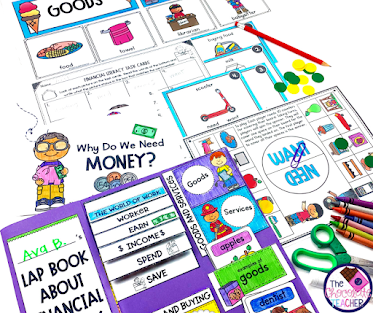Financial literacy is an important skill that children begin to learn at a young age. They quickly pick up on things they see their parents do and say when it comes to money. By the time students enter the classroom, they already have some preconceived notions about money that will have an effect on their personal financial literacy. This topic just might be one of the most important life skills topics we will teach to our students.
Real World Skills
I always find it enjoyable to teach financial literacy because my students can really relate to the real-world life skills that we discuss and learn about.Like it or not, they see the impact of money on daily life.
Tips for Teaching Financial Literacy
When I first started teaching, there were no standards or state requirements for teaching personal financial literacy. While I don't always agree with new standards that are added, I do agree with adding financial literacy standards. Our students desperately need to learn these real-life skills. Statistics about the current financial state of America are quite daunting with more people in debt and fewer savings than ever before. I love teaching my students about these important concepts in hopes that I can affect their futures.
- Money and Bartering
- Goods and Services
- Supply and Demand
- Needs and Wants
- Earning and Using Money
- From Tree to Table
Financial Literacy Unit: Money and Bartering
- What did you start with? Was it a good or service?
- What did you trade for? Was it a good or service?
- Did you get something you wanted or needed?
- Do you think it was a fair trade?
- What can you do if you traded for something don't want or need?


















0 Comments